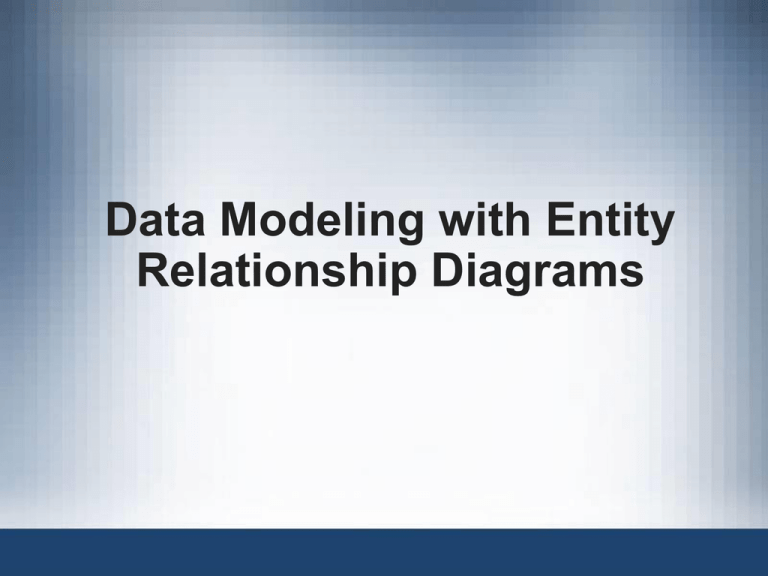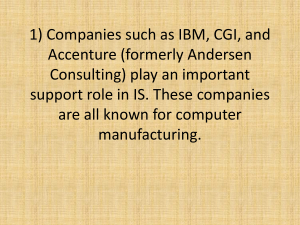
Data Modeling with Entity
Relationship Diagrams
The Entity Relationship Model (ERM)
• ER model forms the basis of an ER diagram
• ERD represents conceptual database as
viewed by end user
• ERDs depict database’s main components:
– Entities
– Attributes
– Relationships
2
Entities
• Refers to entity set and not to single entity
occurrence
• Corresponds to table and not to row in
relational environment
• In Chen and Crow’s Foot models, entity is
represented by rectangle with entity’s name
• The entity name, a noun, is written in capital
letters
3
Attributes
• Characteristics of entities
• Chen notation: attributes represented by ovals
connected to entity rectangle with a line
– Each oval contains the name of attribute it
represents
• Crow’s Foot notation: attributes written in
attribute box below entity rectangle
4
5
Attributes (cont’d.)
• Required attribute: must have a value
• Optional attribute: may be left empty
• Domain: set of possible values for an attribute
– Attributes may share a domain
• Identifiers: one or more attributes that uniquely
identify each entity instance
• Composite identifier: primary key composed of
more than one attribute
6
7
Attributes (cont’d.)
• Composite attribute can be subdivided
• Simple attribute cannot be subdivided
• Single-value attribute can have only a single
value
• Multivalued attributes can have many values
8
9
Attributes (cont’d.)
• Derived attribute: value may be calculated from
other attributes
– Need not be physically stored within database
10
11
Relationships
• Association between entities
• Participants are entities that participate in a
relationship
• Relationships between entities always operate
in both directions
• Relationship can be classified as 1:M
• Relationship classification is difficult to establish
if only one side of the relationship is known
12
Connectivity and Cardinality
• Connectivity
– Describes the relationship classification
• Cardinality
– Expresses minimum and maximum number of
entity occurrences associated with one
occurrence of related entity
• Established by very concise statements known
as business rules
13
14
Existence Dependence
• Existence dependence
– Entity exists in database only when it is
associated with another related entity
occurrence
• Existence independence
– Entity can exist apart from one or more related
entities
– Sometimes such an entity is referred to as a
strong or regular entity
15
Relationship Strength
• Weak (non-identifying) relationships
– Exists if PK of related entity does not contain PK
component of parent entity
• Strong (identifying) relationships
– Exists when PK of related entity contains PK
component of parent entity
16
17
18
Developing an ER Diagram
• Database design is an iterative process
– Create detailed narrative of organization’s
description of operations
– Identify business rules based on description of
operations
– Identify main entities and relationships from
business rules
– Develop initial ERD
– Identify attributes and primary keys that
adequately describe entities
– Revise and review ERD
19
20
21
22
23
24
25
26
27
28
29
30
© 2013 Cengage Learning. All Rights Reserved. This edition is intended for use outside of the U.S. only, with content that may be different from the U.S. Edition.
May not be scanned, copied, duplicated, or posted to a publicly accessible website, in whole or in part.






